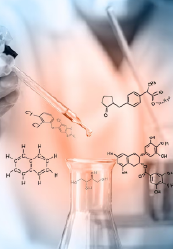Homogeneous Precious Metal Catalyst Market: A Gateway for Superior Catalytic Precision
Catalytic reaction is a crucial relation in several chemical reactions, particularly organic chemical reactions, and catalysts are the nucleus and foundation of catalytic reactions. Gold, silver, platinum, palladium, rhodium, ruthenium, and alternate precious metal catalysts are additionally favored in the catalytic chemical industry because of their elevated catalytic venture and superior catalytic precision. In the homogeneous precious metal catalyst market, approved by researchers, it is circumspectly utilized to restore some changed metal catalysts in the conventional catalytic industry.
Classification of Recurrent Precious Metal Catalysts
- Heterogeneous catalysis: Heterogeneous catalysis deems for approximately 80% of entire catalytic reactions. Normally, heterogeneous catalysts are impenetrable solids, and their prominent configurations are absorbent inorganic conveyor-reinforcing active metals or oxides.
- Homogeneous catalysis: These are normally solvent compounds such as palladium chloride, rhodium chloride, palladium acetate, rhodium carbonyl, triphenylphosphine carbonyl rhodium, rhodium iodide, and so on.
The Market Insight
As per the recent analysis by Polaris Market Research, the global homogeneous precious metal catalyst market size was valued at USD 1.14 billion in 2023 and is predicted to reach USD 5.34 billion by 2032. Also, the study states that the market reveals a robust 18.8% Compound Annual Growth Rate (CAGR) over the predicted timeframe, 2024-2032.
Advantages of Homogeneous Precious Metal Catalysts
- Precious metals are not uncomplicated to experience chemical reactions under customary situations, and their attributes are proportionally stable. They are not difficult to oxidize at room temperature, will not voluntarily explode at escalated temperature, and can counter acid and alkali decomposition generally. In the homogeneous precious metal catalyst market, thus, precious metal catalysts are more steady and simpler to reserve than habitual metal catalysts.
- Precious metal catalysts possess elevated catalytic activity and precision than customary metal catalysts at reduced temperatures. The study discovered that the interplay between the nanoscale precious metal particles and the conveyor will alter the attributes of their surface, which can speed up the reaction and demonstrate escalated catalytic activity.
- As there is coadjutant impact between the precious metal catalysts they can be utilized in merger to considerably escalate the activity of the catalytic reaction. Additionally, precious metals can configure merged catalysts with varied content percentages and varied particle sizes with customary metals, which enhances the accuracy of the reaction and duration of the catalyst and decreases the cost of the catalyst.
Delving into the Dynamics of the Homogeneous Precious Metal Catalyst Market Size and Share to Uncover Key Insights, Request for a Customized Research Report
Growth Drivers
The development of chemical and pharmaceutical industries, which extensively depend on catalysts for several synthesis procedures, assists in the demand for homogenous precious metal catalysts. However, it engages in electrochemical applications, such as fuel cells and electrolysis. As engrossment in green energy technology surges, possibilities surface in advancing catalysts for electrochemical procedures.
Geographical Outlook
Europe: This region dominated the homogeneous precious metal catalyst market due to growing environmental worries that have evoked a revival in the automotive industry with an enhanced production concentration on hydrogen fuel cell automobiles.
Asia Pacific: This region is the fastest growing with a healthy CAGR due to countries such as China and India experiencing sizeable industrialization. This industrial development causes escalating demand for catalysts in several manufacturing procedures, including those utilizing homogenous precious metal catalysts.
End Note
Precious metal catalysts are broadly utilized in the chemical industry due to their potential to accelerate the chemical procedure essentially for organic synthesis reactions. In the homogeneous precious metal catalyst market, due to the escalated thermal stability, precious metal catalysts are utilized as automotive squander gas purification catalysts. Homogenous catalysts are an outstanding option for excessively stereospecific reactions such as asymmetric hydrogenation reactions.


